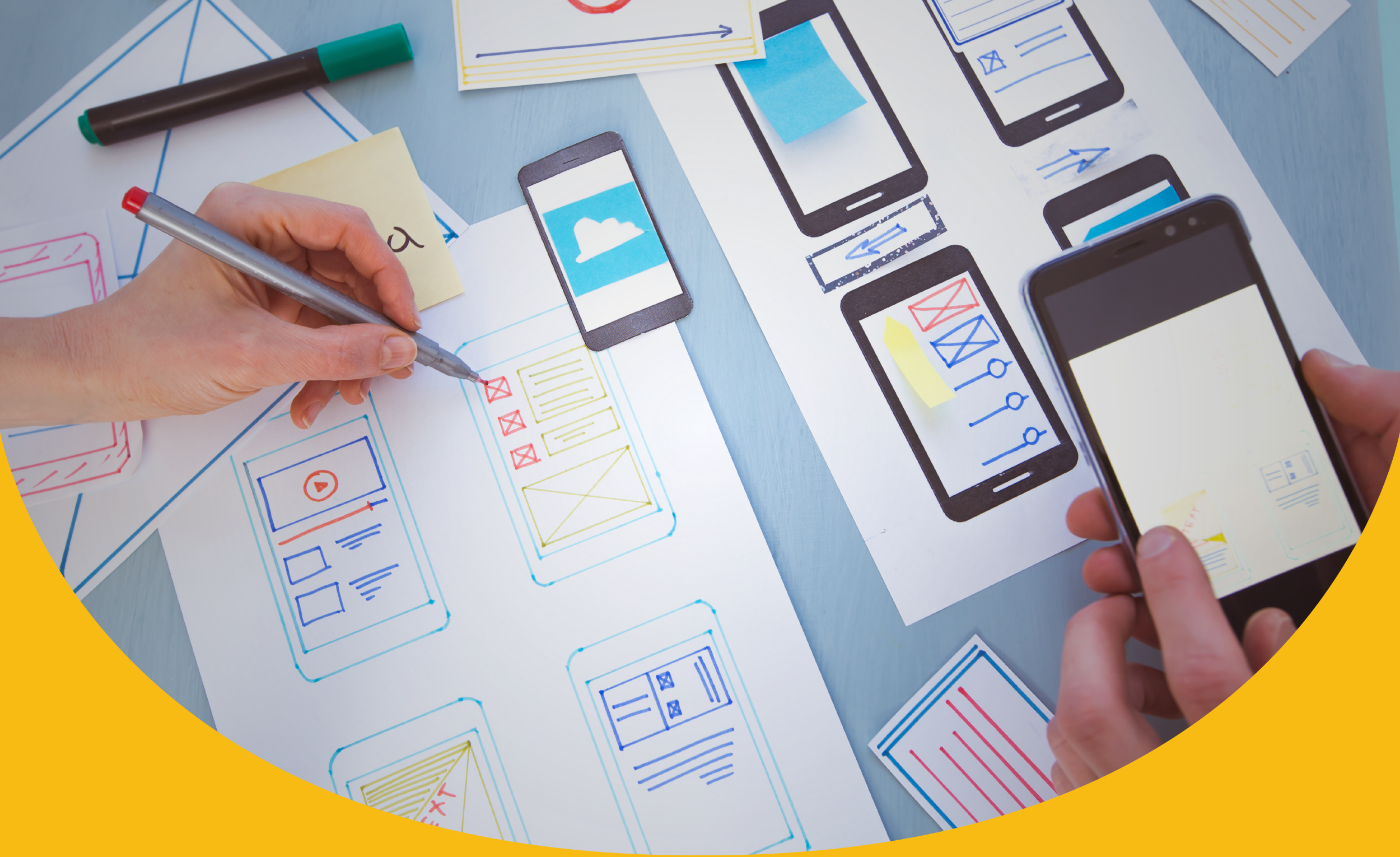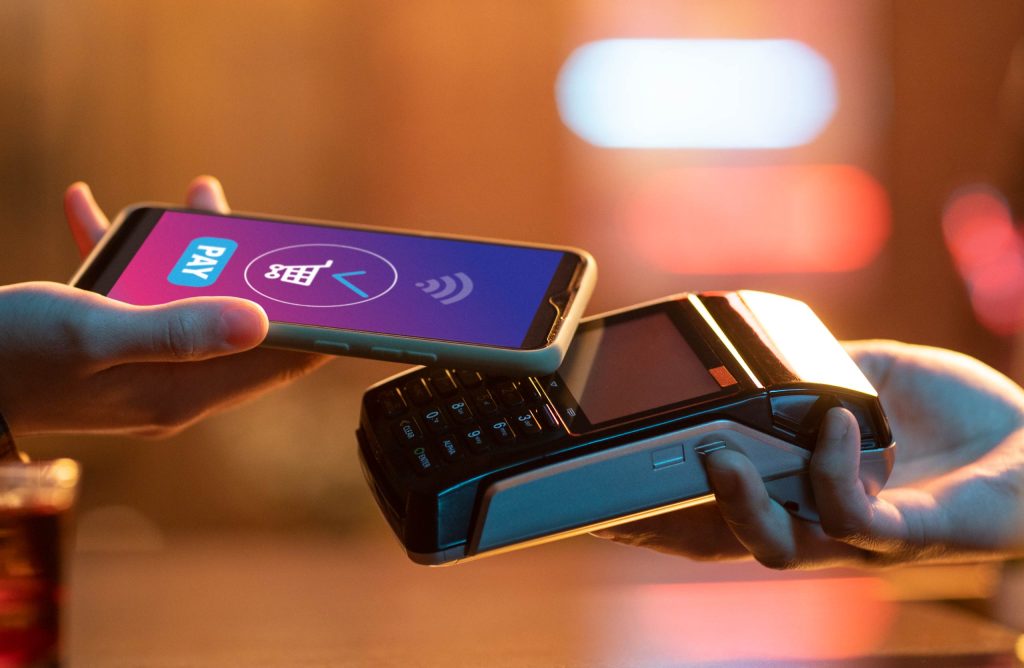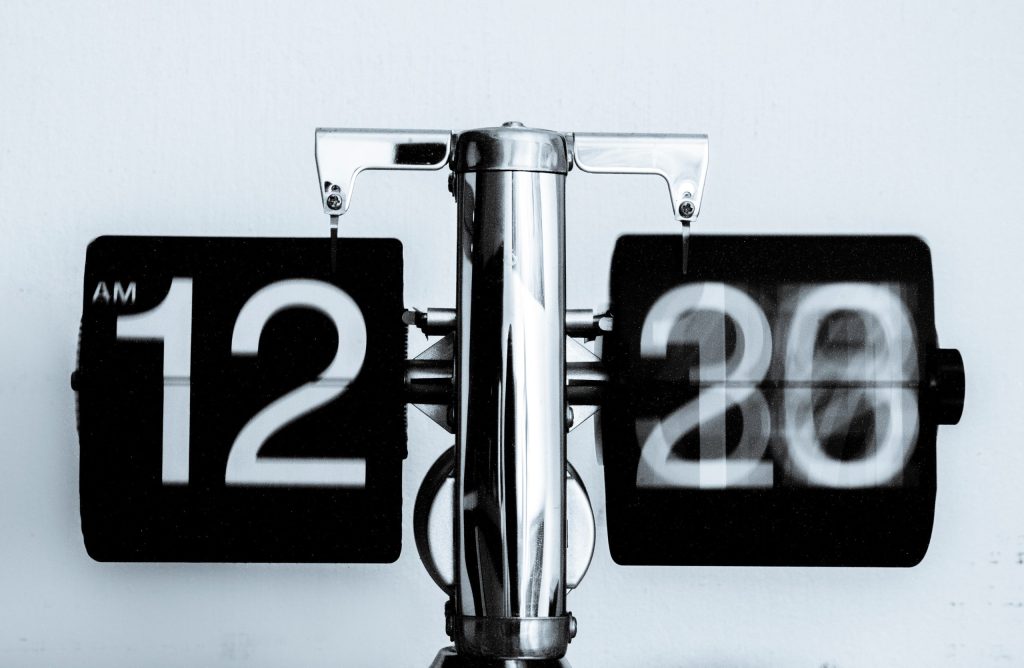Today most people use apps in their daily lives. They have multiple purposes, and each user chooses their favorites for messaging, shopping, paying, booking a hotel, exercising, meditating, and so much more. Few people know that for an app to get into their hands and make their daily lives easier, it has first gone through a lengthy design process that materializes an idea into action.
In today’s blog, we will tell you about all the steps an app goes through until it reaches your device’s app store and is in the race to be successfully chosen among the millions of apps the market offers.
Let’s begin.
The importance of design in the development of an app
Although many only think of colors and typographies when talking about app design, the truth is that it implies much more than that. Its primary responsibility is to structure the application’s functionality, organize its information and ensure maximum fluidity in the transition between screens.
The app design is as important as its development to be successful in the market. So, if we want to achieve proper growth, design is essential and fundamental support throughout the entire app creation process. At the same time, being the visible face of the app is what makes the code behind it attractive.
Another fundamental design aspect is structuring the navigation and defining the visual line of the different elements and screens.
In short, an excellent design allows an app to have well-structured information, offer correct navigation and functionality, and show the user an attractive look and feel that corresponds to the brand’s style. The sum of all this is the key to a unique user experience.
What is the app design process?
The mobile app design process consists of a series of stages and iterations. It starts with a step-by-step plan, but some contingencies arise to make improvements and adjustments in the various stages of testing.
At the same time, there are the client’s expectations and available resources. This last point sets the limit of what can be achieved in the development of applications, taking into account that what is sought is to satisfy some particular need of the users excellently.
The mobile app design process starts with an idea and ends with its publication in stores (and then continues with the analysis of the result of its use). Throughout this process, designers and developers work synchronized, each with assigned and defined tasks.
Aspects to consider when designing an app
To design a high-quality app, the first thing to be clear about is what functionality the app seeks to address and how users will use it.
Answering the following questions is the starting point for defining how the stages of the design process will be organized and composed:
- Whom will the users be?
- What problem does it solve?
- How does it solve it?
- Is it feasible?
- How often will the app be used?
- What is the budget for its development?
- What is the expected profitability?
Stages of the app design process
The general process of designing an app comprises the following stages:
- Conceptualization: This is the stage of ideation and the moment to conduct market research to understand the users’ actual needs and problems. Then it is time to check the feasibility of the concept, and then the planning begins.
- Definition: This is the moment to define in writing and detail who will be the user and what will be the app’s functionality. It will determine the scope of the project, the levels of design complexity required, and the development time, mainly.
- Design: This stage (along with development) is one of the most important and is characterized by being one of the most time-consuming. It is usually divided into the following sub-stages: wireframes, prototypes, tests, and visual design. At this point, the first step is to reach tangible concepts and definitions using wireframes, and then the prototypes are created for testing. Once these steps are completed, the next step is the application of visual styles.
- Development: This is the moment to work with two main axes: the programming of the application code and the correction of functional and design bugs that arise after testing. At this stage, the developer also creates the structure on which the app will work. It ensures the correct functioning of the app.
- Publication and launch: Once the application has been tested and finished, it is published in the official stores for download. The stores will depend on the operating system in which the app has been developed. Once this is done, your app is already in the market waiting for users to start using it!
- Tracking and updates: Tracking provides us with information about statistics and user feedback on the app’s performance. These are valuable insights for future updates.
On the other hand, after being officially launched on the market, all apps require periodic updates to continue working correctly (and to continue being chosen by users). The upgrades also arise due to new operating systems, changes in store policies, and higher versions of smartphones. The upgrades can mean the optimization of existing functionalities and the addition of new ones. At this point, it is critical to have a supplier capable of providing this optimization service permanently.
User Experience Design
User experience design (UX) is the phase in which the protagonist is the user. It is when the app’s content structure, processes, and interactions are defined.
This stage also includes the visual proposal of the screens. It is important to note that the design of the graphic part must consider and reflect the imprint and style of the creator brand while implementing current app design trends.
UX designs are created with wireframes and prototypes and form the basis for the developer’s work. Prototypes allow design decisions to be validated as they are the way to ensure that users will live the experience they are looking for in the app.
The first step is to design the user flow based on the “user journey.” This user journey should consider all the steps and interactions that the user engages with the application from the moment they get to know it (i.e., knows it exists), whether by mail, in person, or by phone.
The second step is the creation of a digital map. Here all the actions and tasks that users perform in the app are established. It is captured in a low-fidelity prototype with the complete structure, and various user tests are performed until the preferred iterations of the UX design are found.
As a result of these tests, the parts of the process or content deemed necessary are redesigned. The prototypes are updated based on the modifications (visual design layer, interactions, etc.) until a faithful prototype of the final product is achieved, which, in any case, needs to be completed and non-operational.
User interface design
The user interface (UI) design begins to be worked on once the structure, content, and functionalities are advanced. What is sought at this stage is that the user knows how to use the application without having to think too much, i.e., more intuitively.
Two aspects that greatly influence the definition of interface design are the target audience and the current trends in visual aspects.
Generally, UI design progresses parallel to UX design, and designers work on the visual elements (UI-Kit).
In the first instance, they define:
- Generic elements
- Color spaces
- General graphic styles
- Typographies
Then they move on to the catalog of graphic elements (UI-Kit), which includes:
- Buttons
- Animations
- Forms
- Content modules
- Image sizes
- Frames
- Visual resources
Once the prototype structure is validated, designers apply the guidelines established in the UI-Kit in the design of all screens. Then they will also add animations, interactions, images, and effects, among others.
The goal: to make the interface simple and easy to use since user satisfaction depends on it. To achieve this, the user must be taken into account throughout the entire design process.
It is how the visual identity of an application is created.
Why it is so important to choose the right developer for your app
To satisfactorily fulfill all the above, the technological partner you decide to develop your app with is vital.
Achieving a precise understanding between provider and client, which manages to bring the idea into action as you imagine, requires fluid communication and an expert developer who knows how to interpret what you are looking for.
Clients often emphasize the technology to be used, the definitions of functionality, the UX design’s empathy, and the UI design’s coherence, missing that all of this is in the hands of the chosen developer.
The decision of whom you work with is as important as the design style of the app you envision. Therefore, dedicating time and analysis to this definition is fundamental to ensure that your investment is in the right place and that you will achieve the expected results.
How we design applications at ThinkUp
At ThinkUp, the design team’s role is a fundamental link in achieving the final product.
In the Discovery stage, we use different UX Design tools such as interviews, surveys, user persona, customer journey, etc. Our process starts with detecting a problem to be solved (which is ultimately a business opportunity). Then, there is the first instance of Discovery, where meetings are held with stakeholders and contextual interviews with users to understand their needs and define them.
Once this stage is completed, we move on to the design stage, where we establish the flow that users may go through, make wireframes in low and high fidelity, prototype, and test. }
Although these stages are planned step by step, the process is iterative, and the different instances are recurrent until we find the ideal guidelines to achieve the best product.
Likewise, when we receive an advanced project where the client arrives with its application in later stages, at ThinkUp, we are in charge of designing the flow in high fidelity together with the design system.
“Design is crucial when developing an app. In ThinkUp’s design area, we do deep research to understand the needs of the end users, and from this, the process begins. If an application was not thought from its design and usability, it is likely that the user will not choose it again and will be frustrated when they have to use it.”
Yamila– UX/UI Designer ThinkUp Team.
Knowing the end user is the first step in our design process. From there, we start to think at an aesthetic level. We define the colors and the elements that the colors and features the application will have—always taking into account the functionalities.
The design is thought beyond visual aesthetics. We want the user to have a pleasant experience as soon as they enter the application and stay calm. We achieve this by facilitating -from the design- the user experience and that the user does not hesitate in the interactions to be performed to reach his goal. For example, the user should be confident in the action involved in clicking on a specific button.
“In the design of any app, it is key to understand whom we are designing for and who our users are. And at the same time, it is essential to pay attention to visual hierarchies and create a “clean design” to be clear about the user’s actions on each screen. Think about usability and accessibility.”
Paula– UX/UI Designer ThinkUp Team.
One of the significant advantages we have at ThinkUp is that we are in constant connection with the client. It helps us to understand what their needs are quick. At the same time, the fact that we have a multidisciplinary team dedicated to the design of each project makes it easier for us to understand the limitations and possible improvements to implement in an app.
Are you looking to develop an app for your business?
We are a digital product development company obsessed with quality and specializing in mobile apps and unique user experiences. We create world-class digital products for startups and enterprises to transform their businesses.
You can learn more about us on our ThinkUp DesignRush Profile






